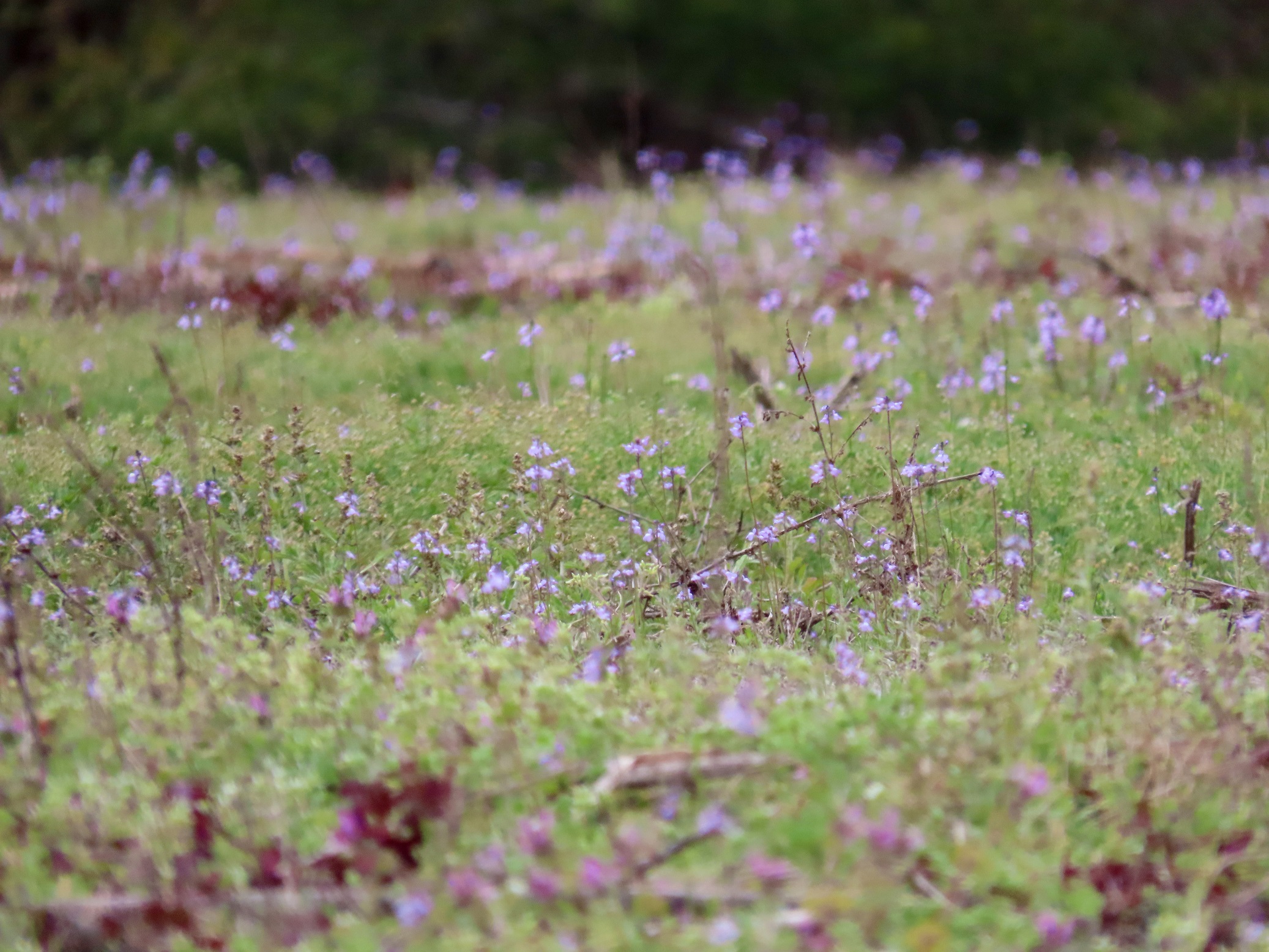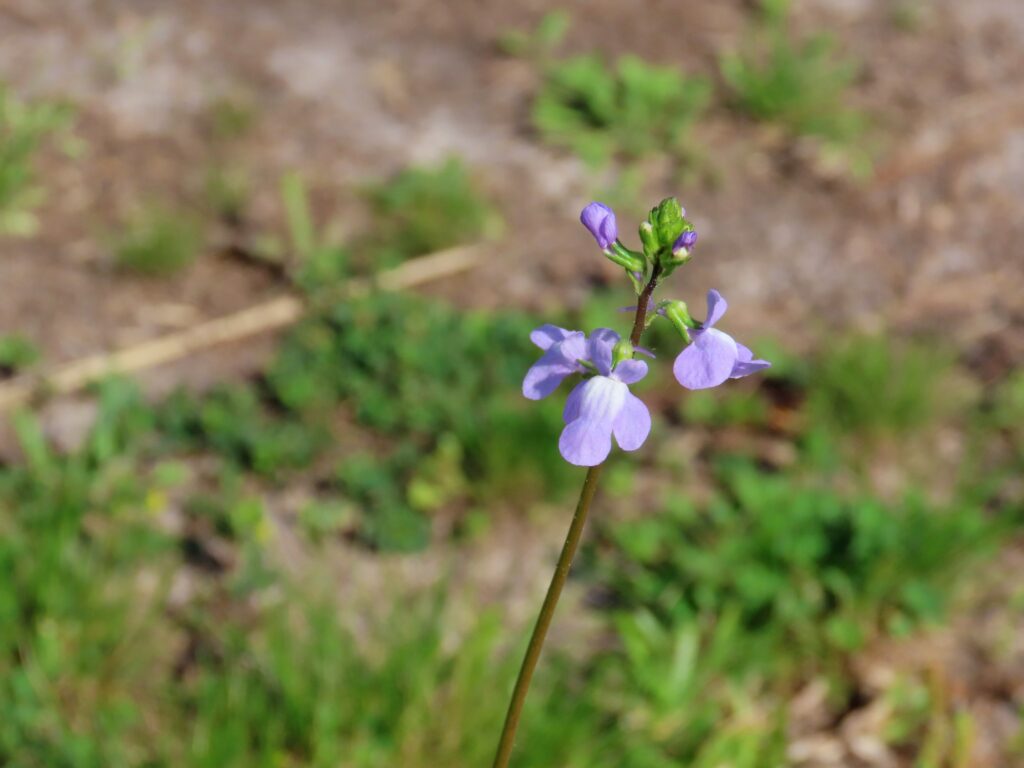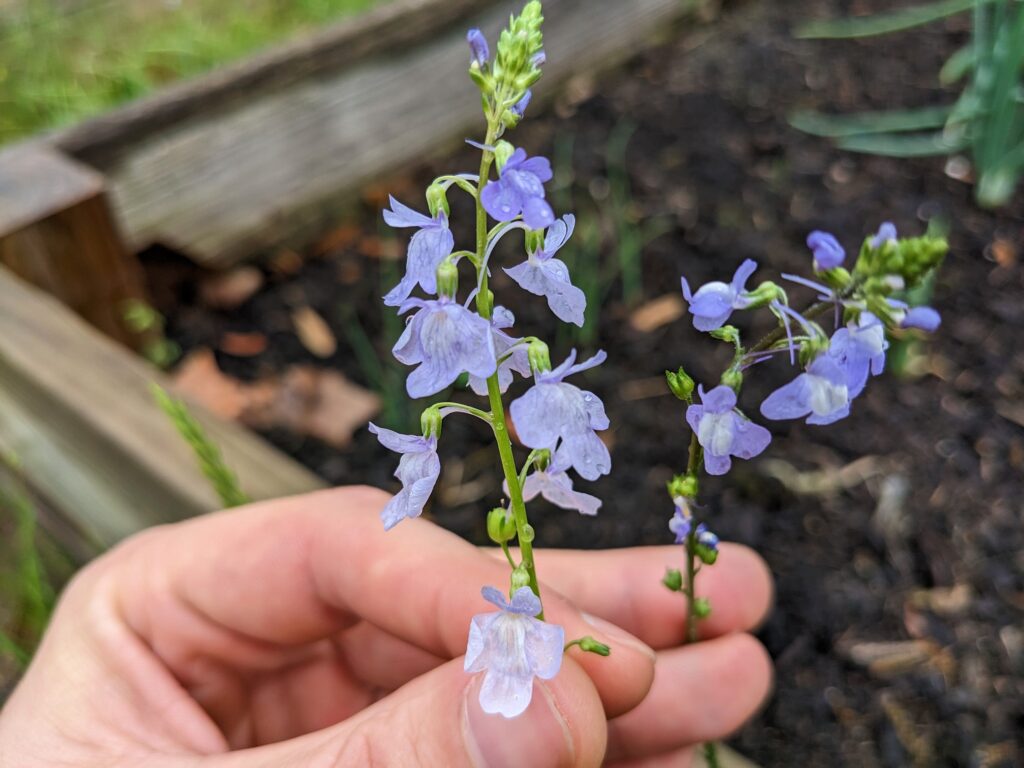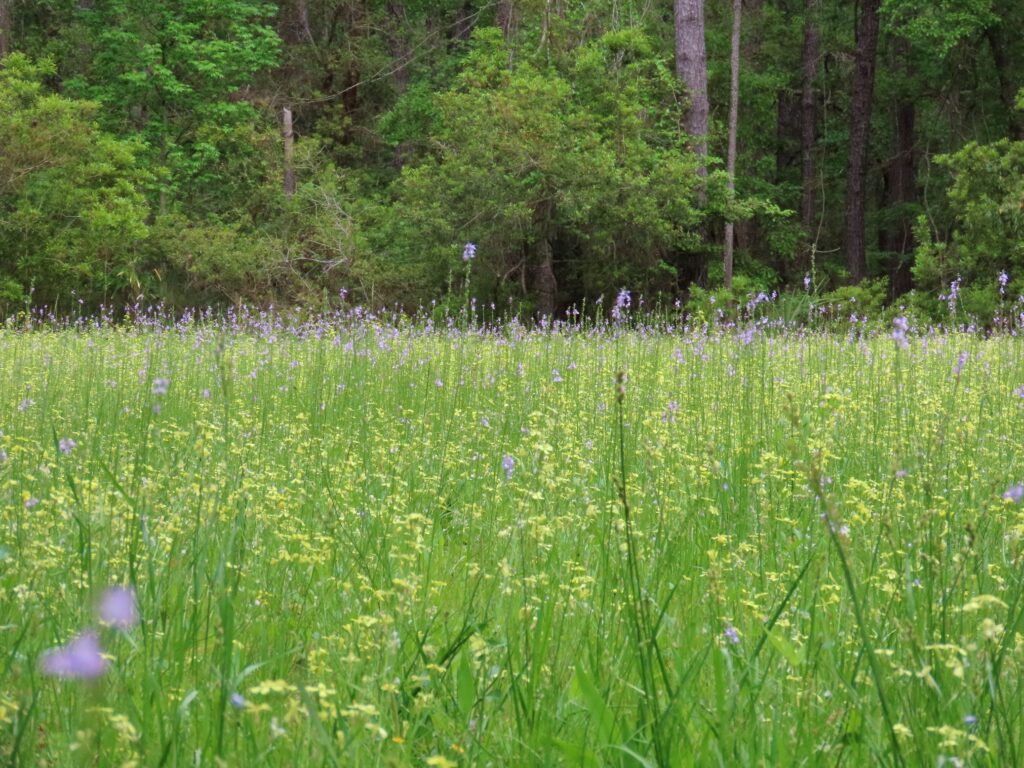



This week for Flora and Fauna Friday we have the bluish beacons of spring fields, Toadflax (Nuttallanthus spp.).
Blue Toadflax (N. canadensis) is found throughout South Carolina and much of the East Coast. Its cousin Texas Toadflax (N. texanus) is common in the western United States but can also be found less commonly across South Carolina. Toadflax are annuals commonly found in sunny open areas and on disturbed soils. Places like pastures, farm fields, roadsides, and lawns. They’re also rather drought tolerant and will crop up on sand ridges, pine-barrens, and dune systems too. Toadflax have small, narrow, pointed leaves that are yellowy-green in color and a nearly succulent texture. They spread laterally with prostrate stems from a central point, forming a clump as they grow. From the center of the clump and from the tip of each stem will emerge flower stalks. These flower stalks typically don’t grow much more than a foot in height and each bears a spike of flowers at the tip. Each flower is snapdragon-like in shape, about a quarter-inch in size, and a subtle blend of white, pastel-pink, and lavender that often blurs into blue or purple at a distance. Blue Toadflax tends to be bluer, with darker shades contrasting its white center. Texas Toadflax flowers tend to be paler, with all colors blurring together, and a bit larger overall. More distinctly the “spur” of the flower, which extends down and back towards the stem, is generally a good fifty-percent longer in Texas Toadflax than Blue Toadflax. However, at a distance, both species look identical. This “spur” is where the flower holds its nectar and, as you might be able to guess, means Toadflax provides food to native pollinators. Its leaves are also the host plant for the Common Buckeye butterfly (Junonia coenia), who’s first brood of caterpillars each year relies on Toadflax for food. As Toadflax seeds are wind dispersed, they colonize new habitats readily and can be spotted blooming just about anywhere dry and sunny in the Lowcountry in early spring. They’re some of the first annual wildflowers to bloom and will often fill up a field or lawn in early spring, briefly setting the entire acreage aglow in an electric-plasma-blue.